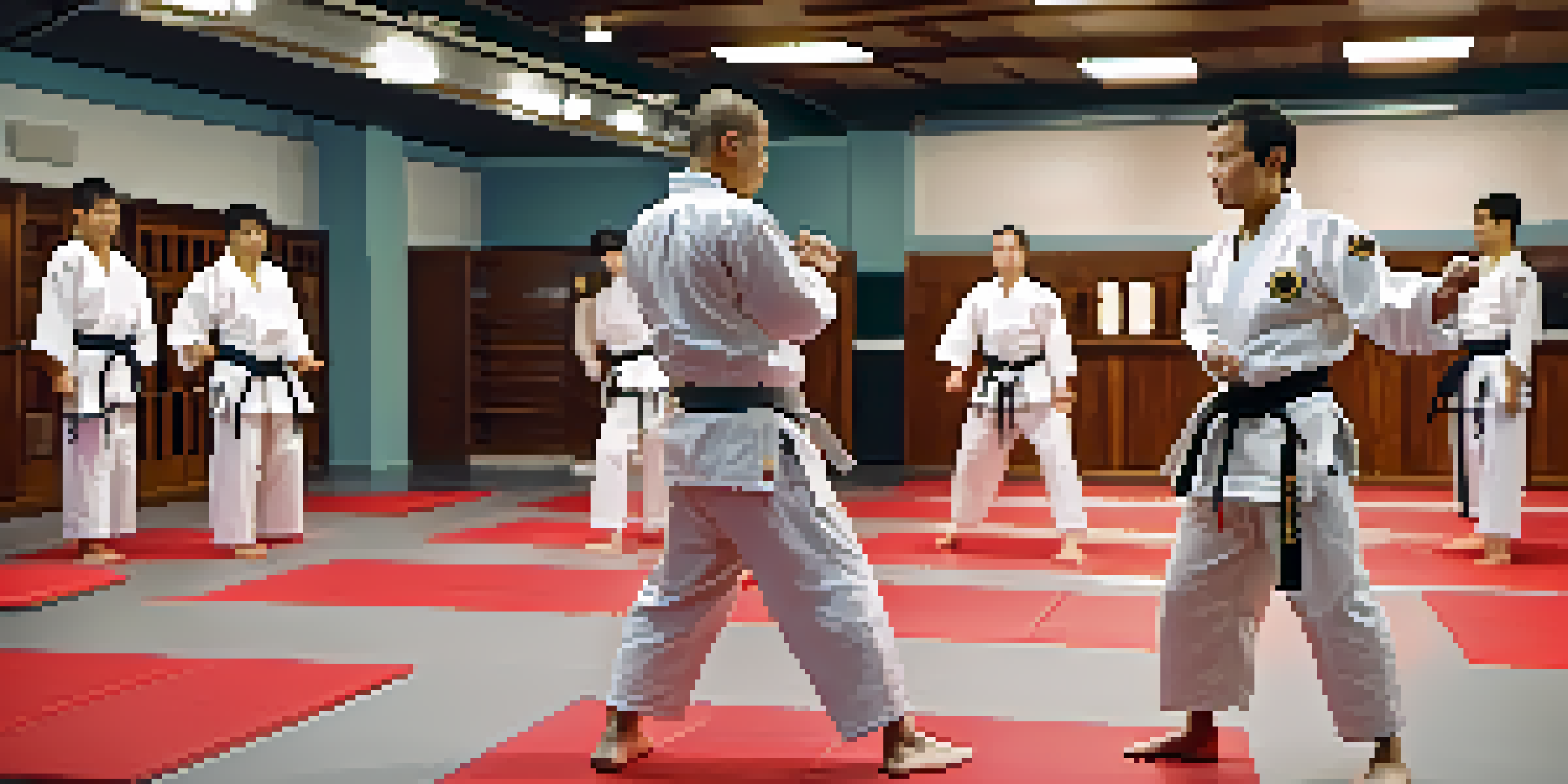Adapting Self Defense for Visual Impairments: Key Strategies

Understanding the Unique Challenges of Visual Impairments
Visual impairments can present unique challenges when it comes to self-defense. Individuals may have to navigate unfamiliar environments without the benefit of sight, making them more vulnerable in potential confrontations. This can lead to heightened anxiety, as both awareness and reaction times may differ from those with full vision.
The only thing worse than being blind is having sight but no vision.
It's crucial to recognize that each person's experience with visual impairment is different, impacting their confidence and ability to respond to threats. For instance, someone with limited vision might rely more on auditory and tactile cues to assess their surroundings. Acknowledging these differences helps in tailoring self-defense strategies that are effective and practical.
By understanding these unique challenges, instructors can better support individuals with visual impairments, ensuring they feel empowered rather than limited. This sets the foundation for developing personalized self-defense techniques that accommodate their specific needs.
Key Principles of Self-Defense for the Visually Impaired
The core principles of self-defense remain the same, regardless of visual ability. Awareness is paramount; being attuned to one's surroundings can help identify potential threats. Techniques such as active listening and maintaining a heightened sense of touch can significantly enhance situational awareness for those with vision loss.

Another important principle is the focus on personal safety rather than engaging in physical confrontation. Techniques can be adapted to prioritize evasion, escape, or calling for help instead of relying solely on striking or grappling. This approach fosters a mindset geared towards self-preservation, which is crucial for all self-defense scenarios.
Unique Challenges in Self-Defense
Visual impairments require tailored self-defense strategies that acknowledge individual experiences and enhance confidence.
Ultimately, the goal of self-defense is to empower individuals to protect themselves. By instilling confidence and providing practical strategies, instructors can help visually impaired individuals feel more secure in their ability to navigate potentially threatening situations.
Utilizing Sound and Touch in Self-Defense Training
Sound and touch are invaluable tools in self-defense training for those with visual impairments. By honing these senses, individuals can develop a keen awareness of their surroundings, which is essential for anticipating threats. For example, practicing with sound cues can help learners identify the direction of an approaching person or object.
Strength does not come from physical capacity. It comes from an indomitable will.
Touch also plays a significant role in self-defense techniques. By using tactile feedback during training, individuals can become more familiar with the physical sensations associated with various moves. This familiarity can increase confidence and improve muscle memory, making it easier to respond effectively in real-life situations.
Incorporating sound and touch into training not only enhances self-defense skills but also builds resilience. Participants learn to trust their instincts and rely on their heightened senses, reinforcing the idea that they can adapt and thrive despite their visual limitations.
Adapting Techniques for Different Environments
Different environments can greatly influence self-defense strategies, especially for visually impaired individuals. Training in various settings, such as crowded spaces or open areas, allows learners to practice adapting their techniques accordingly. For instance, in a crowded environment, evasion techniques may be more beneficial than direct confrontation.
Moreover, understanding how to utilize environmental features can provide a tactical advantage. Learning to navigate obstacles, such as furniture or outdoor elements, ensures that individuals can effectively maneuver during a potential confrontation. This adaptability is key to building confidence and competence in self-defense.
Utilizing Sound and Touch
Sound and touch are crucial in developing situational awareness and self-defense skills for individuals with visual impairments.
By emphasizing the importance of environmental awareness, instructors can help students develop a versatile toolkit of techniques. This approach not only prepares them for real-life situations but also reinforces the idea that self-defense is about being adaptable and resourceful.
Building Physical Strength and Confidence
Physical strength plays an important role in self-defense, and it can be particularly beneficial for those with visual impairments. Engaging in regular physical training, such as strength exercises or martial arts, can help build the necessary muscle tone and endurance. This not only enhances physical capabilities but also boosts overall confidence.
Confidence is a critical component of effective self-defense. When individuals feel physically capable, they are more likely to assert themselves in challenging situations. Incorporating strength training into self-defense practice can empower students to approach potential threats with a sense of assurance and readiness.
Additionally, building physical strength can improve body awareness, helping individuals understand their own capabilities and limitations better. This self-awareness is vital for developing effective self-defense techniques that align with their unique strengths.
Creating a Supportive Training Environment
A supportive training environment is essential for individuals with visual impairments to thrive in self-defense classes. Instructors should foster an atmosphere of inclusivity and understanding, where students feel comfortable expressing their concerns and challenges. This helps build trust, which is crucial for effective learning.
Encouragement and constructive feedback are key components of a supportive environment. Instructors can help students identify their strengths and areas for improvement, fostering a growth mindset that emphasizes progress over perfection. Celebrating small victories can boost morale and motivate learners to continue developing their skills.
Supportive Training Environments
Creating inclusive and encouraging training spaces fosters trust and community, empowering individuals in their self-defense journey.
Creating a community of peers who share similar experiences can also enhance the training process. By connecting with others who understand their challenges, individuals can feel more empowered and less isolated in their self-defense journey.
Resources and Support for Learning Self-Defense
Access to resources and support is vital for individuals with visual impairments who want to learn self-defense. Many organizations offer specialized classes or workshops tailored to the needs of visually impaired individuals. These programs can provide valuable training in a safe and accommodating environment.
Additionally, online resources, such as instructional videos and forums, can offer helpful guidance. Visual impairment-specific resources can also enhance understanding of techniques and strategies. Learning from others' experiences can provide inspiration and practical tips for adapting self-defense to personal needs.

Finally, connecting with local self-defense communities can provide ongoing support and motivation. Whether through group classes or online networks, finding a supportive community can help individuals stay engaged and committed to their self-defense training.